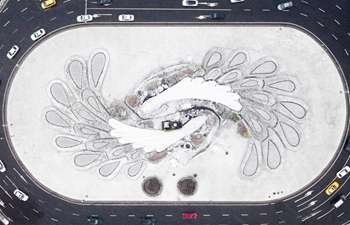LOS ANGELES, Jan. 1 (Xinhua) -- NASA's New Horizons spacecraft performed the farthest flyby in human history as it approached the Kuiper Belt object Ultima Thule on Tuesday.
The New Horizons made the flyby at 12:33 a.m. EST (0533 GMT) on Jan. 1, passing within 2,200 miles (about 3,540 km) of the surface of Ultima Thule at a velocity of 31,500 miles (about 50,694 km) per hour.
It will provide the first close-up look at such a pristine building block of the solar system, according to NASA.
Ultima Thule, at 4 billion miles (about 6.4 billion km) from the Sun and 1 billion miles (about 1.6 billion km) from Pluto, will be the most distant object ever directly explored, said NASA.
When the spacecraft arrives, it will turn a suite of instruments onto the mysterious object, and many of its mysteries will be unveiled.
The New Horizons mission, launched in January of 2006, aims to understand worlds at the edge of our solar system by making the first reconnaissance of the dwarf planet Pluto, and by venturing deeper into the distant, mysterious Kuiper Belt -- a relic of solar system formation.
It is the second historic rendezvous for New Horizons, which zipped by Pluto in July 2015 on the first-ever flyby of that world.
The Johns Hopkins University Applied Physics Laboratory in Laurel, Maryland, designed, built, and operates the New Horizons spacecraft and manages the mission for NASA.













